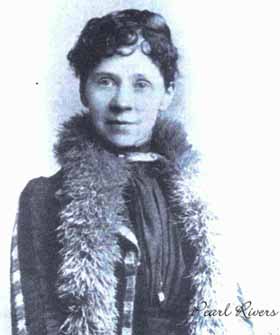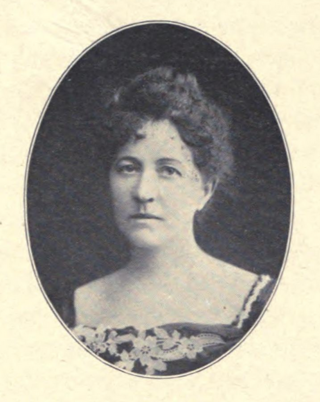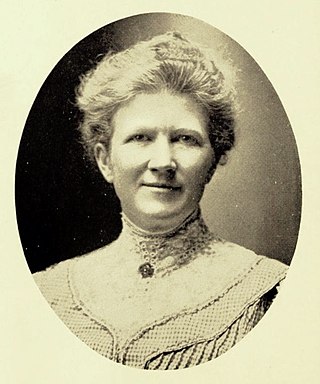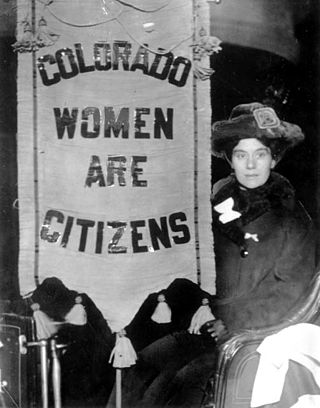
Katherine Wilson Sheppard was the most prominent member of the women's suffrage movement in New Zealand and the country's most famous suffragist. Born in Liverpool, England, she emigrated to New Zealand with her family in 1868. There she became an active member of various religious and social organisations, including the Women's Christian Temperance Union New Zealand. In 1887 she was appointed the WCTU NZ's National Superintendent for Franchise and Legislation, a position she used to advance the cause of women's suffrage in New Zealand.

Clarina Irene Howard Nichols was a journalist, lobbyist and public speaker involved in all three of the major reform movements of the mid-19th century: temperance, abolition, and the women's movement that emerged largely out of the ranks of the first two. Though prominent enough in her time to merit her own chapter in Anthony's History of Woman Suffrage, Nichols has been overlooked since 1900 and only recently have her contributions to equal rights undergone a reassessment.

Women's suffrage in New Zealand was an important political issue in the late nineteenth century. In early colonial New Zealand, as in European societies, women were excluded from any involvement in politics. Public opinion began to change in the latter half of the nineteenth century and after years of effort by women's suffrage campaigners, led by Kate Sheppard, New Zealand became the first nation in the world in which all women had the right to vote in parliamentary elections.

In journalism, the society page of a newspaper is largely or entirely devoted to the social and cultural events and gossip of the location covered. Other features that frequently appear on the society page are a calendar of charity events and pictures of locally, nationally and internationally famous people. Society pages expanded to become women's page sections.

Pearl Rivers was an American journalist and poet, and the first female editor of a major American newspaper. After being the literary editor of the New Orleans Times Picayune, Rivers became the owner and publisher in 1876 when her elderly husband died. In 1880, she took over as managing editor, where she continued until her death in 1896.

Laura de Force Gordon was a California lawyer, newspaper publisher, and a prominent suffragette. She was the first woman to run a daily newspaper in the United States, and the second female lawyer admitted to practice in California.
Ellen M. Mitchell (1838–1920) was an American philosopher, educator and education reformer. She was one of the first women to be appointed lecturer in a university, in addition to writing philosophy, literature and literary criticism.

Ellis Meredith (1865–1955) was an American suffragist, journalist, and novelist, known as the Susan B. Anthony of Colorado.

Women's suffrage was established in the United States on a full or partial basis by various towns, counties, states and territories during the latter decades of the 19th century and early part of the 20th century. As women received the right to vote in some places, they began running for public office and gaining positions as school board members, county clerks, state legislators, judges, and, in the case of Jeannette Rankin, as a member of Congress.

Caroline Nichols Churchill was a Canadian-born writer and newspaper editor in the United States, best known as the editor of the Queen Bee, a feminist publication prominent during the Colorado Suffrage movement. As a travel writer and editor, Churchill aimed to promote female independence in the post Civil War West, culminating ultimately in the right to vote in the state of Colorado. Her publications Over the Purple Hills, Over the Evergreen Hills, and Little Sheaves detailed the growth of California as well as her experiences in Texas, Missouri, Kansas, Indian Territory and later Colorado. In 1988, she was inducted into the Colorado Women's Hall of Fame.

Elizabeth Piper Ensley, was an educator and an African-American suffragist. Born in Massachusetts, Ensley was a teacher on the eastern coast of the country. She moved to Colorado where she achieved prominence as a leader in the Colorado suffrage movement. She was also a journalist, activist, and a leader and founder of local women's clubs.

Caroline Bancroft (1900–1985) was a journalist and performed in the Ziegfeld Follies. She is known for the books and booklets that she wrote about Colorado's history and its pioneers. In 1990, she was inducted into the Colorado Women's Hall of Fame.

Theodosia Grace Ammons was an American suffragist, co-founder with Eliza Pickrell Routt of the Department of Domestic Economy at Colorado Agricultural College, and the first female dean at the college.
Louie Croft Boyd was an American nurse, hospital superintendent of nurses, nursing instructor, and writer. As a lobbyist for the newly formed Colorado State Trained Nurses Association, she advocated for legislation to regulate the licensing of nurses in Colorado. Upon passage of the bill in 1905, she applied for and became the first licensed nurse in the state. She was posthumously inducted into the Colorado Nurses Association Hall of Fame and the Colorado Women's Hall of Fame in 2004.

Therese Alberta Parkinson Jenkins was a suffragist, credited with saving women's suffrage in the State of Wyoming. She was the first woman delegate to any Republican National Convention, the one in Minneapolis in 1892.
The Portland Bee was a Republican newspaper in Portland in the U.S. state of Oregon in the late 19th century. It was launched in November 1875, the same year as the Portland Daily Bulletin disincorporated; like the Bulletin, it had both daily and weekly editions. It initially had two daily editions, and circulated 1,000 free copies.

Women's suffrage in Colorado had an early victory, being the second state to grant women's suffrage and the first to do so through a voter referendum in 1893. Even while Colorado was a territory, lawmakers and other leaders tried to include women's suffrage in laws and later in the state constitution. The constitution did give women the right to vote in school board elections. The first voter referendum campaign was held in 1877. The Woman Suffrage Association of Colorado worked to encourage people to vote yes. Nationally-known suffragists, such as Susan B. Anthony and Lucy Stone spoke alongside Colorado's own Alida Avery around the state. Despite the efforts to influence voters, the referendum failed. Suffragists continued to grow support for women's right to vote. They exercised their right to vote in school board elections and ran for office. In 1893, another campaign for women's suffrage took place. Both Black and white suffragists worked to influence voters, gave speeches, and turned out on election day in a last-minute push. The effort was successful and women earned equal suffrage. In 1894, Colorado again made history by electing three women to the Colorado house of representatives. After gaining the right to vote, Colorado women continued to fight for suffrage in other states. Some women became members of the Congressional Union (CU) and pushed for a federal suffrage amendment. Colorado women also used their right to vote to pass reforms in the state and to support women candidates.

This is a timeline of women's suffrage in Colorado. Women's suffrage efforts started in the late 1860s. During the state constitutional convention for Colorado, women received a small win when they were granted the right to vote in school board elections. In 1877, the first women's suffrage referendum was defeated. In 1893, another referendum was successful. After winning the right to vote, Colorado women continued to fight for a federal women's suffrage amendment. While most women were able to vote, it wasn't until 1970 that Native Americans living on reservations were enfranchised.

Minnie Reynolds Scalabrino (1865-1936) was an American journalist, women's rights activist, and organizer, founding the Denver Women's Press Club and Denver Woman's Club. She advocated for equal rights, women's suffrage and temperance, something that she was devoted to for more than 30 years. She was instrumental in the passage of laws that gave women the right to vote at the state level, and then in 1920 for women throughout the United States.
















